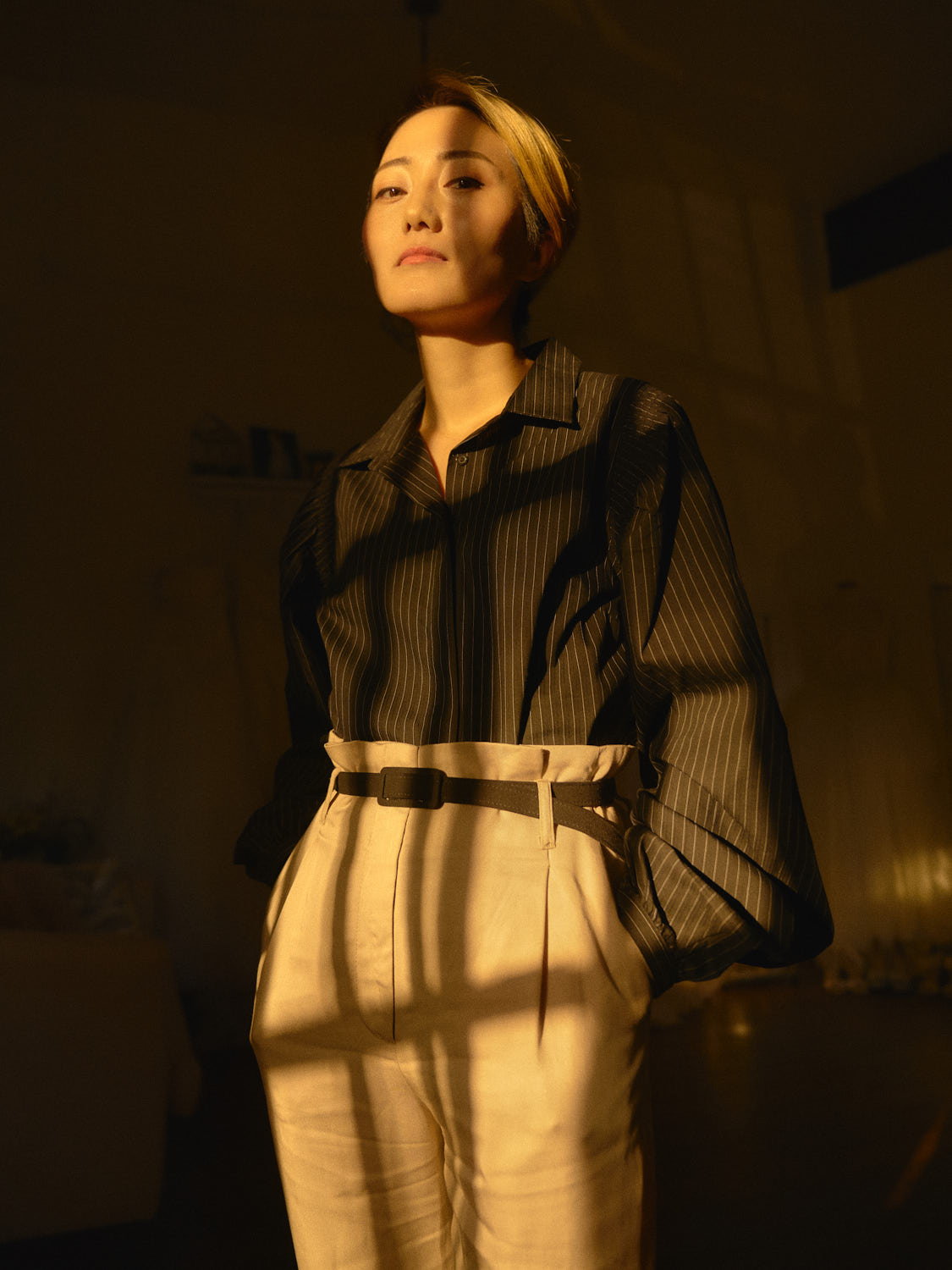The Designer Series: Sunny Chang (Part 1)
5 Min. Read | The Designer Series | A.M.
Sunny Kay Designs
Sunny was born in South Korea to an artistic family. In keeping with tradition, time-honored art and ceremony were celebrated in their home. But perhaps out-of-step with contemporary sentiment, the pursuit of a commercially viable artistic career was itself both celebrated and encouraged.
“My mom loved fashion too, so my mom always [supported] me,” Sunny recalls. “My dad is always happy [when] I make a new dress or clothes.” From her earliest memories, Sunny recalls that her predilection for fashion was a source of joy for her parents, whom recognized early on that their children showed potential in a number of artistic mediums.
“WHEN I WAS YOUNG I WAS SO DIFFERENT. I COULDN’T FIND MY STYLE SO I DECIDED TO MAKE MY OWN CLOTHES.”
And it seems fashion has become a legacy passed down throughout her family’s generations. Sunny’s daughter, now seven, has expressed both a love and an aptitude for fashion, going so far as to design dresses for herself.
“She is copying me everyday,” Sunny enthusiastically asserts. “She wants to learn to make a dress, how to use a Serger, how to use a needle.” And like her mother before her, Sunny is overjoyed to encourage and support her daughter’s creativity.
The oldest of two children, Sunny spent much of her time in Seoul. A self-professed city-girl, she drew much of her inspiration from the energy and activity of the bustling capital city. Her little brother—himself a talented artist—pursued interior design and has become quite successful in his endeavors.
But for Sunny, the pathway to establishing a career in fashion was less straight-forward and surfaced numerous challenges that would take many years to overcome.
/ ˈSƏRJƏR / | NOUN
Textile Manufacturing Equipment.
A specialized machine dedicated to producing an Overlock stitch and trimming unwanted fabric from edges. Invented and patented by The Merrow Machine Company (now Merrow Sewing Machine Company) in the 1800s for commercial use, it subsequently underwent numerous improvements, most notably in the form of the Baby Lock design seen in homes today. It remains an essential tool for many independent apparel and accessories manufacturers.
HIGH SCHOOL
Though fashion was always a passion in Sunny’s life, it wasn’t until high school that she began a diligent effort to develop an understanding of art history. Sunny recalls having drawn upon classical art as a primary source of inspiration during this time.
Additionally, contemporary Korean culture—of which the tensions between tradition and progression would form a theme throughout the remainder of her career. Central to this theme, one finds Sunny’s favorite color both anchor and launchpad for all of her creative endeavors to date.
“Some say that Korean people just love white,” she offers fondly. “When I was young I thought that I really liked white. I think that pure white is similar or is the same thing as brighter. Everything is fresh."
In Korean culture, the color white signifies many things—among them light, purity and temperance. For centuries, the unified Korean people had been known colloquially as baeguiminjok or “the white-clad people” (백의민족) whose love of colorlessness was apparent in everything from fashion to interior design.
It was at this time Sunny became fixated on bridal gowns for their metaphysical allusions and made them the focus of her life’s work.
COLLEGE
Sunny enrolled at Hanyang Women’s University and declared her major within the Department of Fashion Design, tackling the technical curriculum with ease. And while the course load was difficult, she recalls her greatest challenge was, and remains, artistic in nature. “I try to practice, but I’m not good at sketching,” she reluctantly confesses. And while she still practices sketching on paper each day, the images are most alive in her imagination, requiring little effort to translate into finished constructions.
Sunny graduated from Hanyang W. University in 2003 with her degree in Fashion Design. She recalls the difficulties were well worth it as she stood before family and friends eager to celebrate her victory on one of her proudest occasions: “I remember the graduation ceremony. All my high school friends [came]. [They] all celebrated me and gave me flowers. I can’t believe I did it.”
Though the culmination of her collegiate efforts adequately prepared her for a career in fashion, it would be another 13 years before she would see her first collection grace the runway. But rather than succumb to discouragement, Sunny found within herself what she needed to keep hope alive.
“I COULD NEVER GIVE UP MY DREAM. I’M STILL HERE AND I KEEP GOING. ALL PEOPLE CAN DO IT. JUST DON’T GIVE UP YOUR DREAM.”









